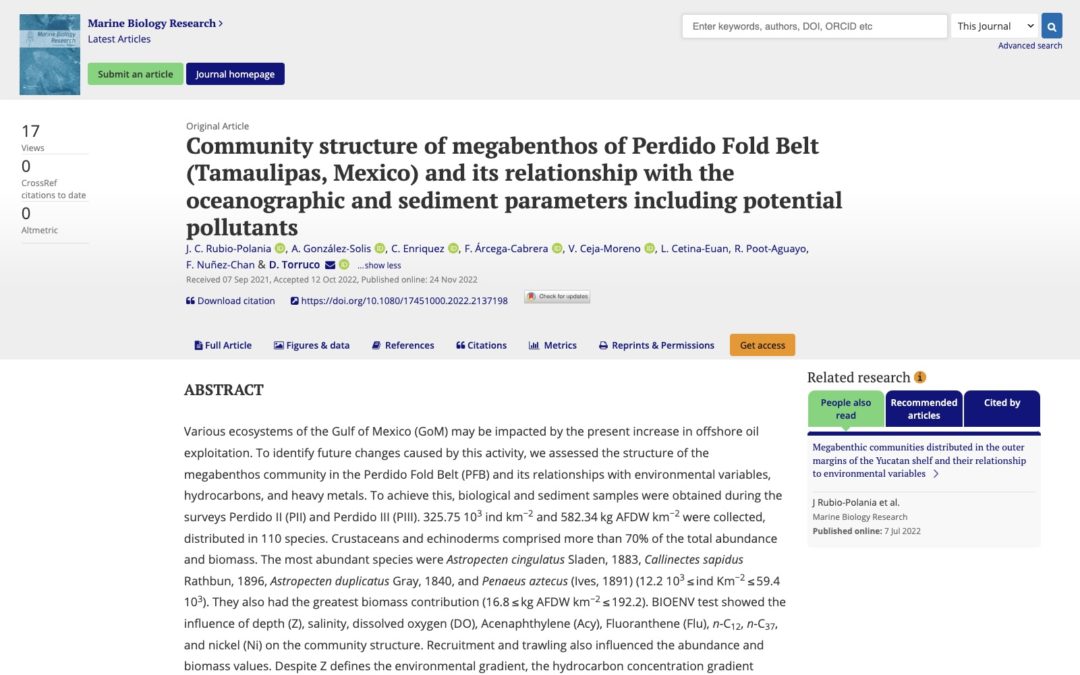Authors: J. C. Rubio-Polania, A. González-Solis, C. Enriquez, F. Árcega-Cabrera, V. Ceja-Moreno, L. Cetina-Euan, R. Poot-Aguayo, F. Nuñez-Chan & D. Torruco
https://doi.org/10.1080/17451000.2022.2137198
Abstract
Various ecosystems of the Gulf of Mexico (GoM) may be impacted by the present increase in offshore oil exploitation. To identify future changes caused by this activity, we assessed the structure of the megabenthos community in the Perdido Fold Belt (PFB) and its relationships with environmental variables, hydrocarbons, and heavy metals. To achieve this, biological and sediment samples were obtained during the surveys Perdido II (PII) and Perdido III (PIII). 325.75 103 ind km−2 and 582.34 kg AFDW km−2 were collected, distributed in 110 species. Crustaceans and echinoderms comprised more than 70% of the total abundance and biomass. The most abundant species were Astropecten cingulatus Sladen, 1883, Callinectes sapidus Rathbun, 1896, Astropecten duplicatus Gray, 1840, and Penaeus aztecus (Ives, 1891) (12.2 103 ≤ ind Km−2 ≤ 59.4 103). They also had the greatest biomass contribution (16.8 ≤ kg AFDW km−2 ≤ 192.2). BIOENV test showed the influence of depth (Z), salinity, dissolved oxygen (DO), Acenaphthylene (Acy), Fluoranthene (Flu), n-C12, n-C37, and nickel (Ni) on the community structure. Recruitment and trawling also influenced the abundance and biomass values. Despite Z defines the environmental gradient, the hydrocarbon concentration gradient within the shelf areas makes it a good candidate for developing monitoring programmes.
Keywords: Megacrustaceans, malacofauna, echinoderms, BIOENV, LINKTREE, Gulf of Mexico


Recent Comments